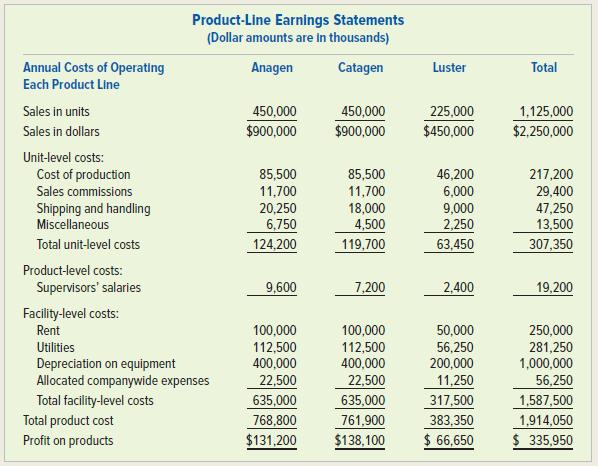Real-world companies often seek to reduce the complexity of their operations in an attempt to increase profits.
Question:
Real-world companies often seek to reduce the complexity of their operations in an attempt to increase profits. In 2012, Procter & Gamble (P&G) believed it could increase the company’s profits by eliminating some product-lines. In 2017, P&G announced that it had “divested, discontinued, or consolidated 105 brands.” As a result, even though its sales had decreased by 22 percent from 2012 to 2017, its profit as a percentage of sales had increased by 55 percent. Other companies have also tried to improve their financial performance by downsizing. In November 2017, General Electric announced it would begin a downsizing operation that would result in their exiting businesses using over $20 billion in assets in the next one to two years. In January 2018, Newell Brands, the company whose products include Tupperware, Sharpie pens, Elmer’s Glue, and Rawlings sports products, announced it would be reducing its product offerings to the extent that it would close half of its facilities and reduce it revenues by 20 percent.
Required
a. Identify some costs savings these companies might realize by reducing the number of items they sell or use in production. Be as specific as possible, and use your imagination.
b. Consider the additional information presented as follows, which is hypothetical. All dollar amounts are in thousands, unit amounts are not. Assume that P&G decides to eliminate one shampoo product- line, Luster, for one of its segments that currently produces three products. As a result, the following are expected to occur:
(1) The number of units sold for the segment is expected to drop by only 125,000 because of the elimination of Luster, since most customers are expected to purchase an Anagen or Catagen product instead. The shift of sales from Luster to Anagen and Catagen is expected to be evenly split. In other words, the sales of Anagen and Catagen will each increase by 50,000 units.
(2) Rent is paid for the entire production facility, and the space used by Luster cannot be sublet.
(3) Utilities costs are expected to be reduced by $40,000.
(4) All of the supervisors for Luster were all terminated. No new supervisors will be hired for Anagen or Catagen.
(5) Half of the equipment being used to produce Luster is also used to produce the other two products and its depreciation cost must be absorbed by them. The remaining equipment has a remaining a book-value of $340,000 and can be sold f or only $60,000.
(6) Facility-level costs will continue to be allocated between the product lines based on the number of units produced.

Prepare revised product-line earnings statements based on the elimination of Luster. It will be necessary to calculate some per-unit data to accomplish this.
Step by Step Answer:

Survey Of Accounting
ISBN: 9781260575293
6th Edition
Authors: Thomas Edmonds, Christopher Edmonds, Philip Olds





